
mlx-vlm
MLX-VLM is a package for inference and fine-tuning of Vision Language Models (VLMs) on your Mac using MLX.
Stars: 1615
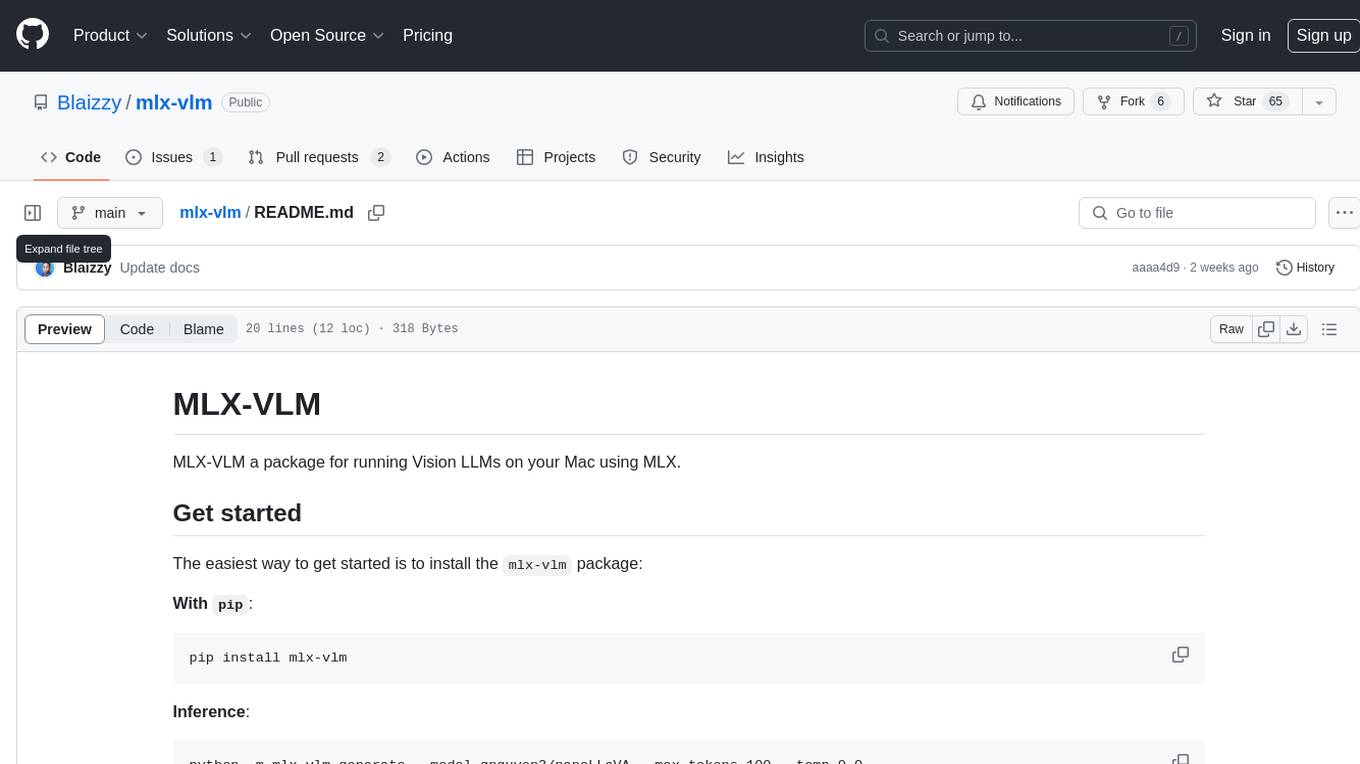
MLX-VLM is a package designed for running Vision LLMs on Mac systems using MLX. It provides a convenient way to install and utilize the package for processing large language models related to vision tasks. The tool simplifies the process of running LLMs on Mac computers, offering a seamless experience for users interested in leveraging MLX for vision-related projects.
README:
MLX-VLM is a package for inference and fine-tuning of Vision Language Models (VLMs) and Omni Models (VLMs with audio and video support) on your Mac using MLX.
The easiest way to get started is to install the mlx-vlm package using pip:
pip install -U mlx-vlmGenerate output from a model using the CLI:
# Text generation
mlx_vlm.generate --model mlx-community/Qwen2-VL-2B-Instruct-4bit --max-tokens 100 --prompt "Hello, how are you?"
# Image generation
mlx_vlm.generate --model mlx-community/Qwen2-VL-2B-Instruct-4bit --max-tokens 100 --temperature 0.0 --image http://images.cocodataset.org/val2017/000000039769.jpg
# Audio generation (New)
mlx_vlm.generate --model mlx-community/gemma-3n-E2B-it-4bit --max-tokens 100 --prompt "Describe what you hear" --audio /path/to/audio.wav
# Multi-modal generation (Image + Audio)
mlx_vlm.generate --model mlx-community/gemma-3n-E2B-it-4bit --max-tokens 100 --prompt "Describe what you see and hear" --image /path/to/image.jpg --audio /path/to/audio.wavLaunch a chat interface using Gradio:
mlx_vlm.chat_ui --model mlx-community/Qwen2-VL-2B-Instruct-4bitHere's an example of how to use MLX-VLM in a Python script:
import mlx.core as mx
from mlx_vlm import load, generate
from mlx_vlm.prompt_utils import apply_chat_template
from mlx_vlm.utils import load_config
# Load the model
model_path = "mlx-community/Qwen2-VL-2B-Instruct-4bit"
model, processor = load(model_path)
config = load_config(model_path)
# Prepare input
image = ["http://images.cocodataset.org/val2017/000000039769.jpg"]
# image = [Image.open("...")] can also be used with PIL.Image.Image objects
prompt = "Describe this image."
# Apply chat template
formatted_prompt = apply_chat_template(
processor, config, prompt, num_images=len(image)
)
# Generate output
output = generate(model, processor, formatted_prompt, image, verbose=False)
print(output)from mlx_vlm import load, generate
from mlx_vlm.prompt_utils import apply_chat_template
from mlx_vlm.utils import load_config
# Load model with audio support
model_path = "mlx-community/gemma-3n-E2B-it-4bit"
model, processor = load(model_path)
config = model.config
# Prepare audio input
audio = ["/path/to/audio1.wav", "/path/to/audio2.mp3"]
prompt = "Describe what you hear in these audio files."
# Apply chat template with audio
formatted_prompt = apply_chat_template(
processor, config, prompt, num_audios=len(audio)
)
# Generate output with audio
output = generate(model, processor, formatted_prompt, audio=audio, verbose=False)
print(output)from mlx_vlm import load, generate
from mlx_vlm.prompt_utils import apply_chat_template
from mlx_vlm.utils import load_config
# Load multi-modal model
model_path = "mlx-community/gemma-3n-E2B-it-4bit"
model, processor = load(model_path)
config = model.config
# Prepare inputs
image = ["/path/to/image.jpg"]
audio = ["/path/to/audio.wav"]
prompt = ""
# Apply chat template
formatted_prompt = apply_chat_template(
processor, config, prompt,
num_images=len(image),
num_audios=len(audio)
)
# Generate output
output = generate(model, processor, formatted_prompt, image, audio=audio, verbose=False)
print(output)Start the server:
mlx_vlm.serverThe server provides multiple endpoints for different use cases and supports dynamic model loading/unloading with caching (one model at a time).
-
/generate- Main generation endpoint with support for images, audio, and text -
/chat- Chat-style interaction endpoint -
/responses- OpenAI-compatible endpoint -
/health- Check server status -
/unload- Unload current model from memory
curl -X POST "http://localhost:8000/generate" \
-H "Content-Type: application/json" \
-d '{
"model": "mlx-community/Qwen2-VL-2B-Instruct-4bit",
"prompt": "Hello, how are you?",
"stream": true,
"max_tokens": 100
}'curl -X POST "http://localhost:8000/generate" \
-H "Content-Type: application/json" \
-d '{
"model": "mlx-community/Qwen2.5-VL-32B-Instruct-8bit",
"image": ["/path/to/repo/examples/images/renewables_california.png"],
"prompt": "This is today'\''s chart for energy demand in California. Can you provide an analysis of the chart and comment on the implications for renewable energy in California?",
"system": "You are a helpful assistant.",
"stream": true,
"max_tokens": 1000
}'curl -X POST "http://localhost:8000/generate" \
-H "Content-Type: application/json" \
-d '{
"model": "mlx-community/gemma-3n-E2B-it-4bit",
"audio": ["/path/to/audio1.wav", "https://example.com/audio2.mp3"],
"prompt": "Describe what you hear in these audio files",
"stream": true,
"max_tokens": 500
}'curl -X POST "http://localhost:8000/generate" \
-H "Content-Type: application/json" \
-d '{
"model": "mlx-community/gemma-3n-E2B-it-4bit",
"image": ["/path/to/image.jpg"],
"audio": ["/path/to/audio.wav"],
"prompt": "",
"max_tokens": 1000
}'curl -X POST "http://localhost:8000/chat" \
-H "Content-Type: application/json" \
-d '{
"model": "mlx-community/Qwen2-VL-2B-Instruct-4bit",
"messages": [
{
"role": "user",
"content": "What is in this image?",
"images": ["/path/to/image.jpg"]
}
],
"max_tokens": 100
}'curl -X POST "http://localhost:8000/responses" \
-H "Content-Type: application/json" \
-d '{
"model": "mlx-community/Qwen2-VL-2B-Instruct-4bit",
"messages": [
{
"role": "user",
"content": [
{"type": "input_text", "text": "What is in this image?"},
{"type": "input_image", "image": "/path/to/image.jpg"}
]
}
],
"max_tokens": 100
}'-
model: Model identifier (required) -
prompt: Text prompt for generation -
image: List of image URLs or local paths (optional) -
audio: List of audio URLs or local paths (optional, new) -
system: System prompt (optional) -
messages: Chat messages for chat/OpenAI endpoints -
max_tokens: Maximum tokens to generate -
temperature: Sampling temperature -
top_p: Top-p sampling parameter -
stream: Enable streaming responses
MLX-VLM supports analyzing multiple images simultaneously with select models. This feature enables more complex visual reasoning tasks and comprehensive analysis across multiple images in a single conversation.
from mlx_vlm import load, generate
from mlx_vlm.prompt_utils import apply_chat_template
from mlx_vlm.utils import load_config
model_path = "mlx-community/Qwen2-VL-2B-Instruct-4bit"
model, processor = load(model_path)
config = model.config
images = ["path/to/image1.jpg", "path/to/image2.jpg"]
prompt = "Compare these two images."
formatted_prompt = apply_chat_template(
processor, config, prompt, num_images=len(images)
)
output = generate(model, processor, formatted_prompt, images, verbose=False)
print(output)mlx_vlm.generate --model mlx-community/Qwen2-VL-2B-Instruct-4bit --max-tokens 100 --prompt "Compare these images" --image path/to/image1.jpg path/to/image2.jpgMLX-VLM also supports video analysis such as captioning, summarization, and more, with select models.
The following models support video chat:
- Qwen2-VL
- Qwen2.5-VL
- Idefics3
- LLaVA
With more coming soon.
mlx_vlm.video_generate --model mlx-community/Qwen2-VL-2B-Instruct-4bit --max-tokens 100 --prompt "Describe this video" --video path/to/video.mp4 --max-pixels 224 224 --fps 1.0These examples demonstrate how to use multiple images with MLX-VLM for more complex visual reasoning tasks.
MLX-VLM supports fine-tuning models with LoRA and QLoRA.
To learn more about LoRA, please refer to the LoRA.md file.
For Tasks:
Click tags to check more tools for each tasksFor Jobs:
Alternative AI tools for mlx-vlm
Similar Open Source Tools

mlx-vlm
MLX-VLM is a package designed for running Vision LLMs on Mac systems using MLX. It provides a convenient way to install and utilize the package for processing large language models related to vision tasks. The tool simplifies the process of running LLMs on Mac computers, offering a seamless experience for users interested in leveraging MLX for vision-related projects.
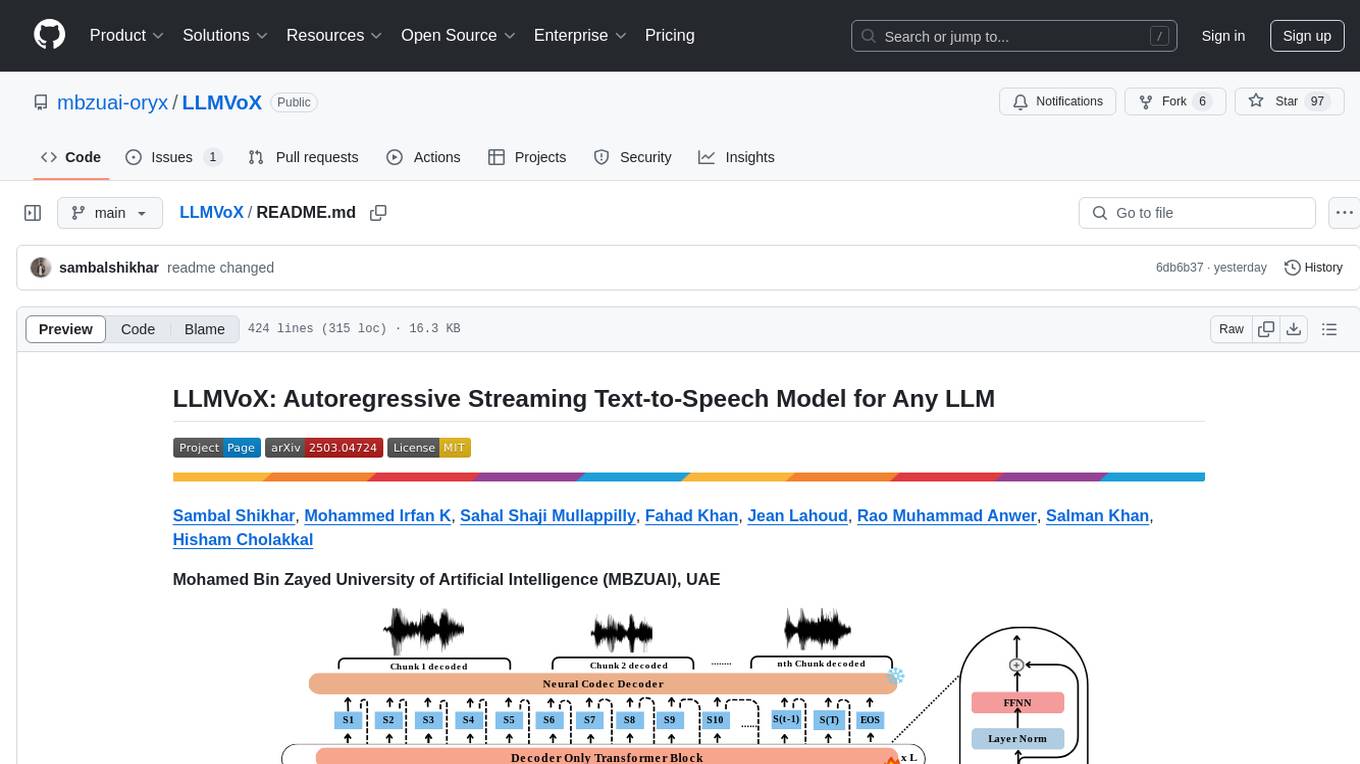
LLMVoX
LLMVoX is a lightweight 30M-parameter, LLM-agnostic, autoregressive streaming Text-to-Speech (TTS) system designed to convert text outputs from Large Language Models into high-fidelity streaming speech with low latency. It achieves significantly lower Word Error Rate compared to speech-enabled LLMs while operating at comparable latency and speech quality. Key features include being lightweight & fast with only 30M parameters, LLM-agnostic for easy integration with existing models, multi-queue streaming for continuous speech generation, and multilingual support for easy adaptation to new languages.
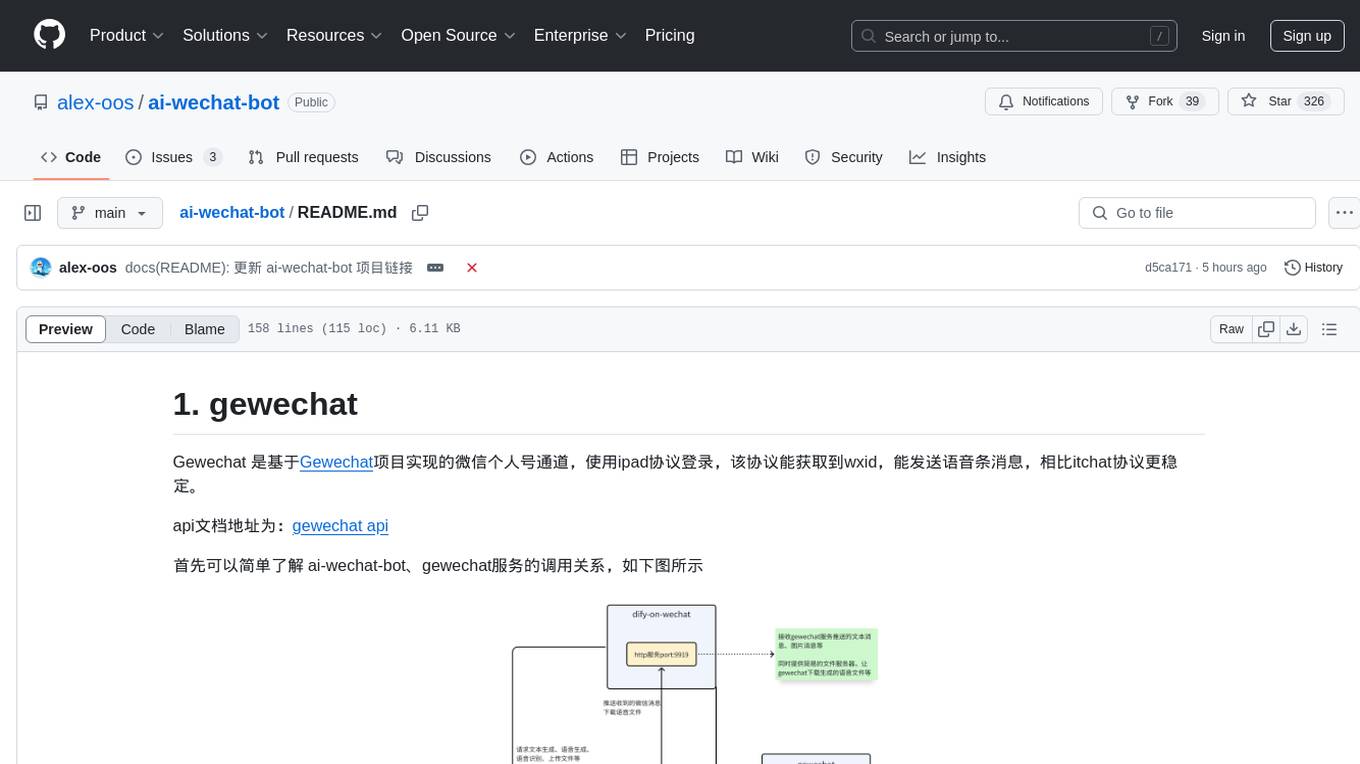
ai-wechat-bot
Gewechat is a project based on the Gewechat project to implement a personal WeChat channel, using the iPad protocol for login. It can obtain wxid and send voice messages, which is more stable than the itchat protocol. The project provides documentation for the API. Users can deploy the Gewechat service and use the ai-wechat-bot project to interface with it. Configuration parameters for Gewechat and ai-wechat-bot need to be set in the config.json file. Gewechat supports sending voice messages, with limitations on the duration of received voice messages. The project has restrictions such as requiring the server to be in the same province as the device logging into WeChat, limited file download support, and support only for text and image messages.
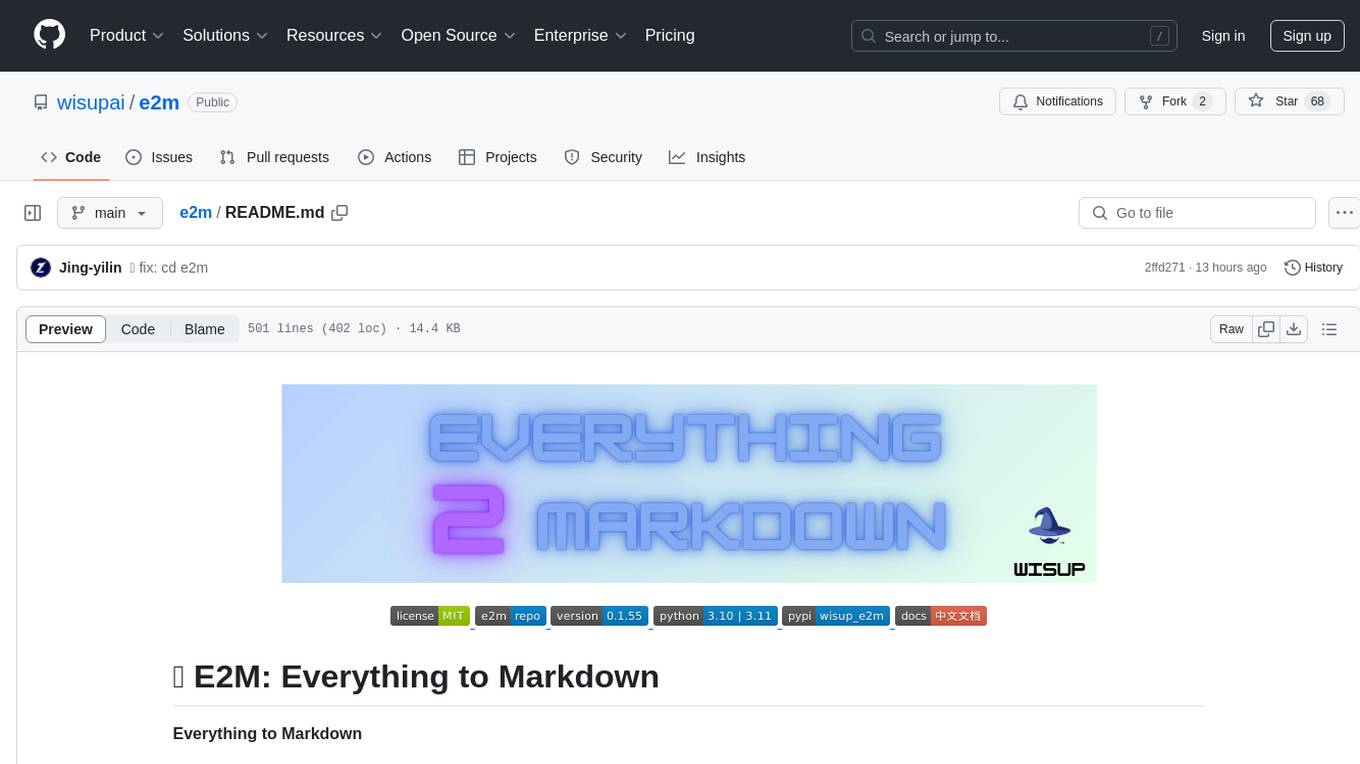
e2m
E2M is a Python library that can parse and convert various file types into Markdown format. It supports the conversion of multiple file formats, including doc, docx, epub, html, htm, url, pdf, ppt, pptx, mp3, and m4a. The ultimate goal of the E2M project is to provide high-quality data for Retrieval-Augmented Generation (RAG) and model training or fine-tuning. The core architecture consists of a Parser responsible for parsing various file types into text or image data, and a Converter responsible for converting text or image data into Markdown format.
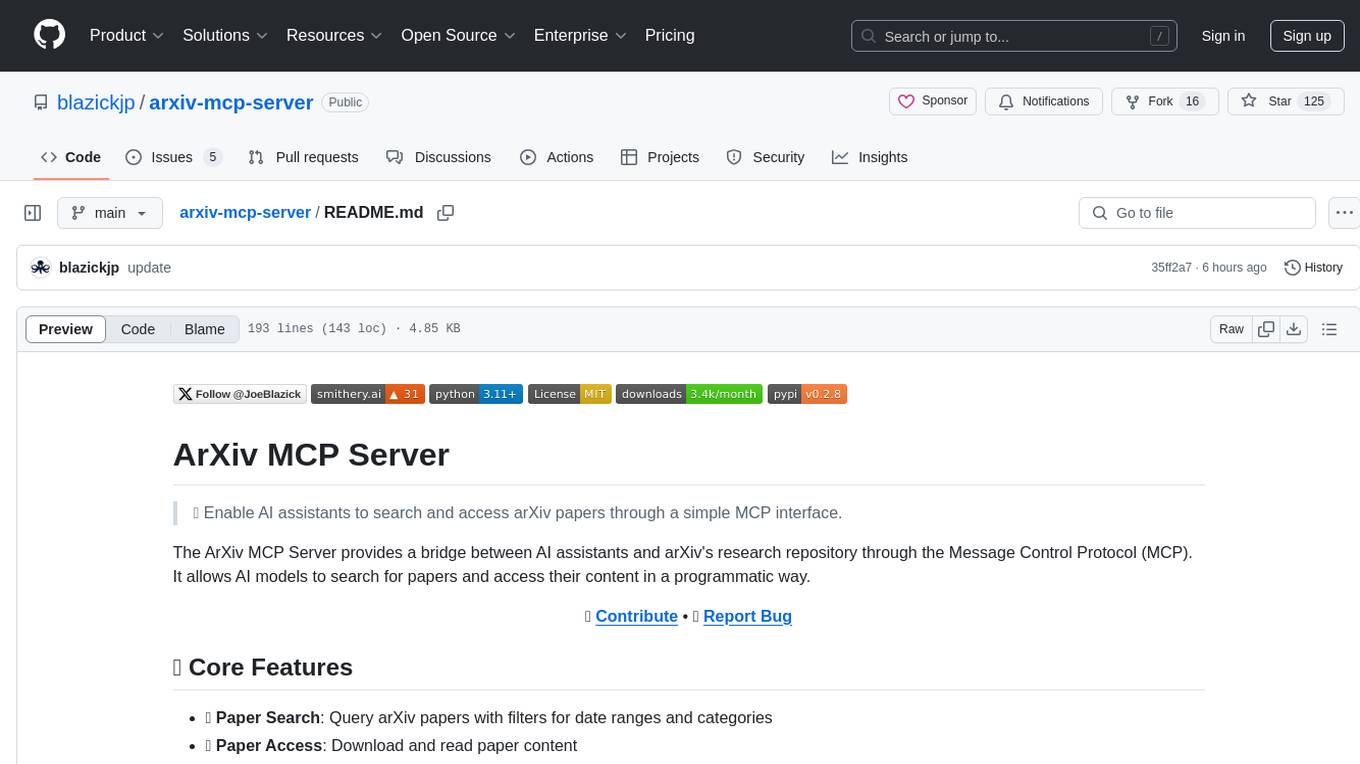
arxiv-mcp-server
The ArXiv MCP Server acts as a bridge between AI assistants and arXiv's research repository, enabling AI models to search for and access papers programmatically through the Message Control Protocol (MCP). It offers features like paper search, access, listing, local storage, and research prompts. Users can install it via Smithery or manually for Claude Desktop. The server provides tools for paper search, download, listing, and reading, along with specialized prompts for paper analysis. Configuration can be done through environment variables, and testing is supported with a test suite. The tool is released under the MIT License and is developed by the Pearl Labs Team.
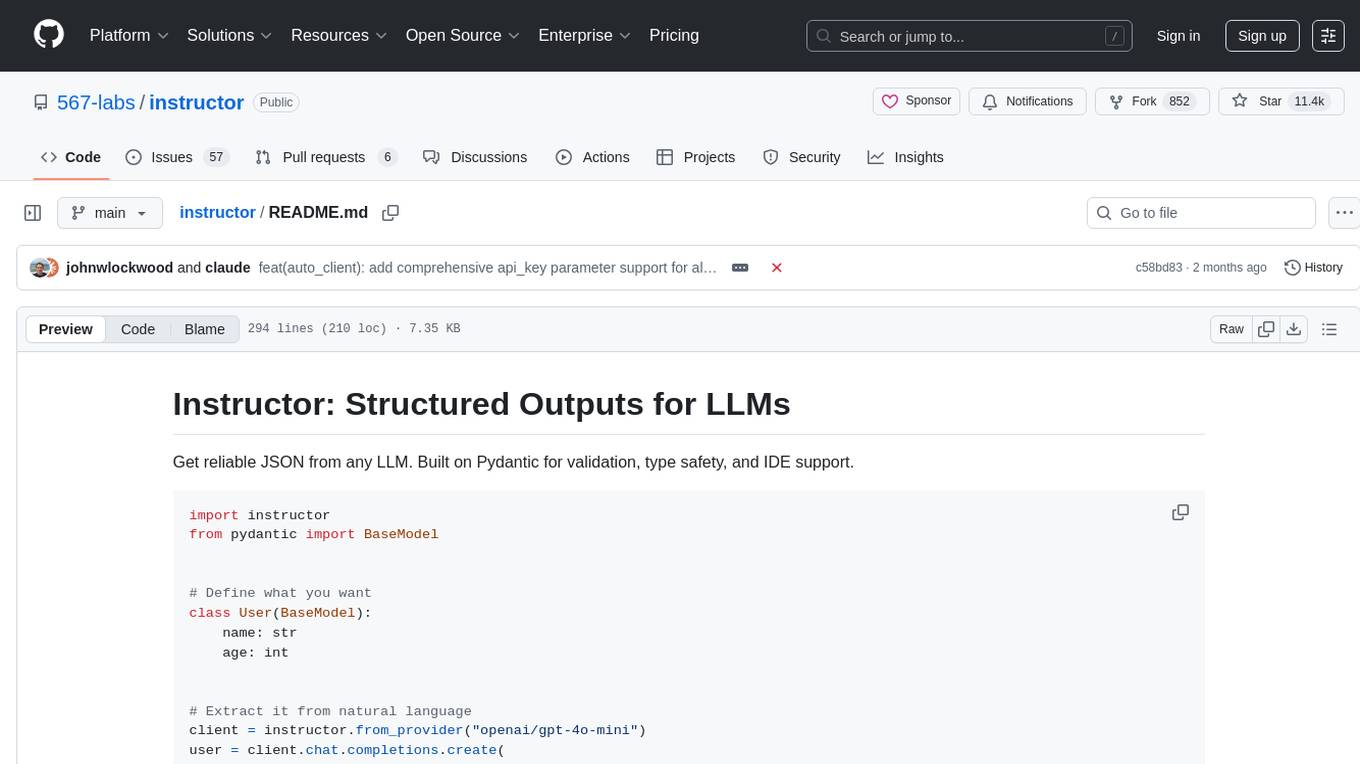
instructor
Instructor is a tool that provides structured outputs from Large Language Models (LLMs) in a reliable manner. It simplifies the process of extracting structured data by utilizing Pydantic for validation, type safety, and IDE support. With Instructor, users can define models and easily obtain structured data without the need for complex JSON parsing, error handling, or retries. The tool supports automatic retries, streaming support, and extraction of nested objects, making it production-ready for various AI applications. Trusted by a large community of developers and companies, Instructor is used by teams at OpenAI, Google, Microsoft, AWS, and YC startups.
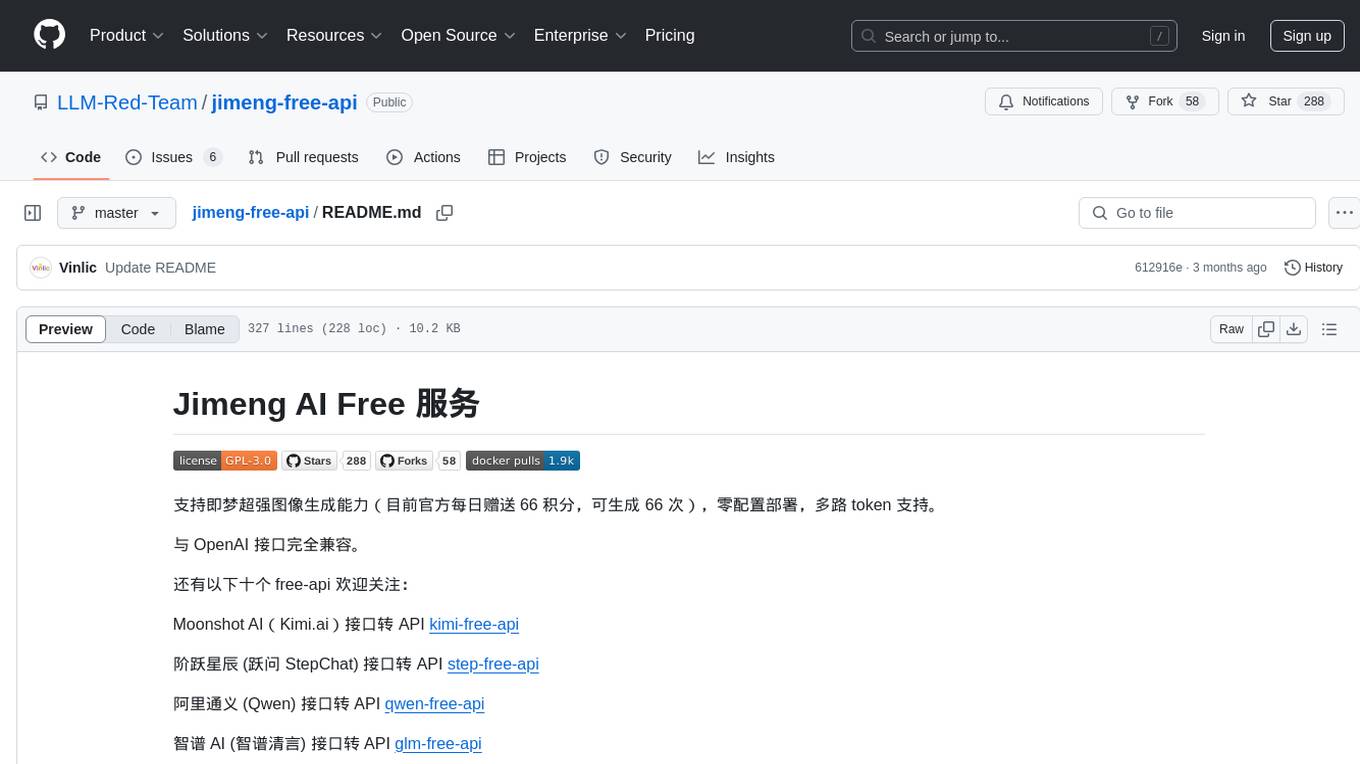
jimeng-free-api
Jimeng AI Free service provides powerful image generation capabilities with zero configuration deployment and support for multiple tokens. It is fully compatible with the OpenAI interface. The repository also includes other free APIs like Moonshot AI, StepChat, Qwen, GLM AI, Metaso AI, Doubao by ByteDance, Spark by Xunfei, Hailuo AI, DeepSeek, and Emohaa AI. Users can access the service by obtaining a sessionid from Jimeng and using it as a Bearer Token in the Authorization header for API requests. The service supports chat completions and image generations, with different models and parameters available for customization. Various deployment options are provided, including Docker, Docker-compose, Render, Vercel, and native deployment. Users are advised to use the recommended client applications for faster and simpler access to the free API services.
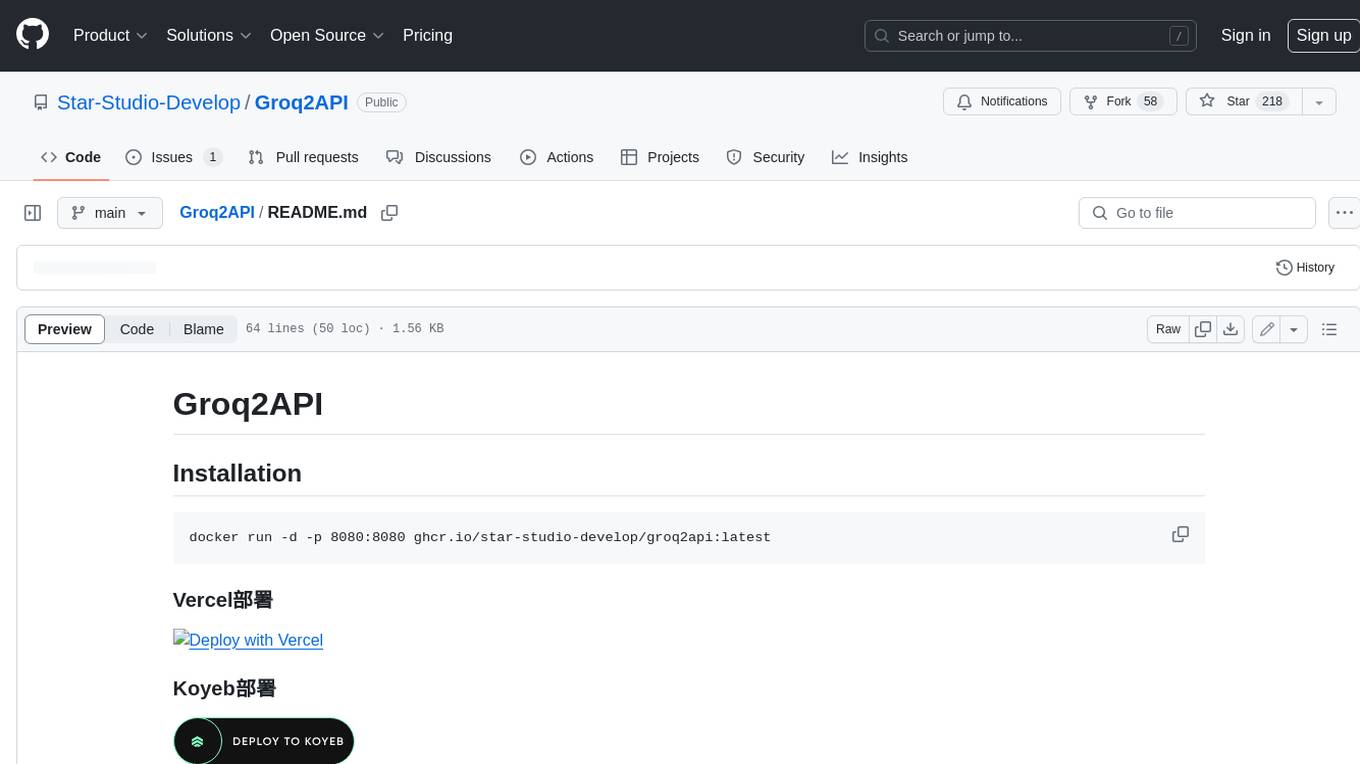
Groq2API
Groq2API is a REST API wrapper around the Groq2 model, a large language model trained by Google. The API allows you to send text prompts to the model and receive generated text responses. The API is easy to use and can be integrated into a variety of applications.
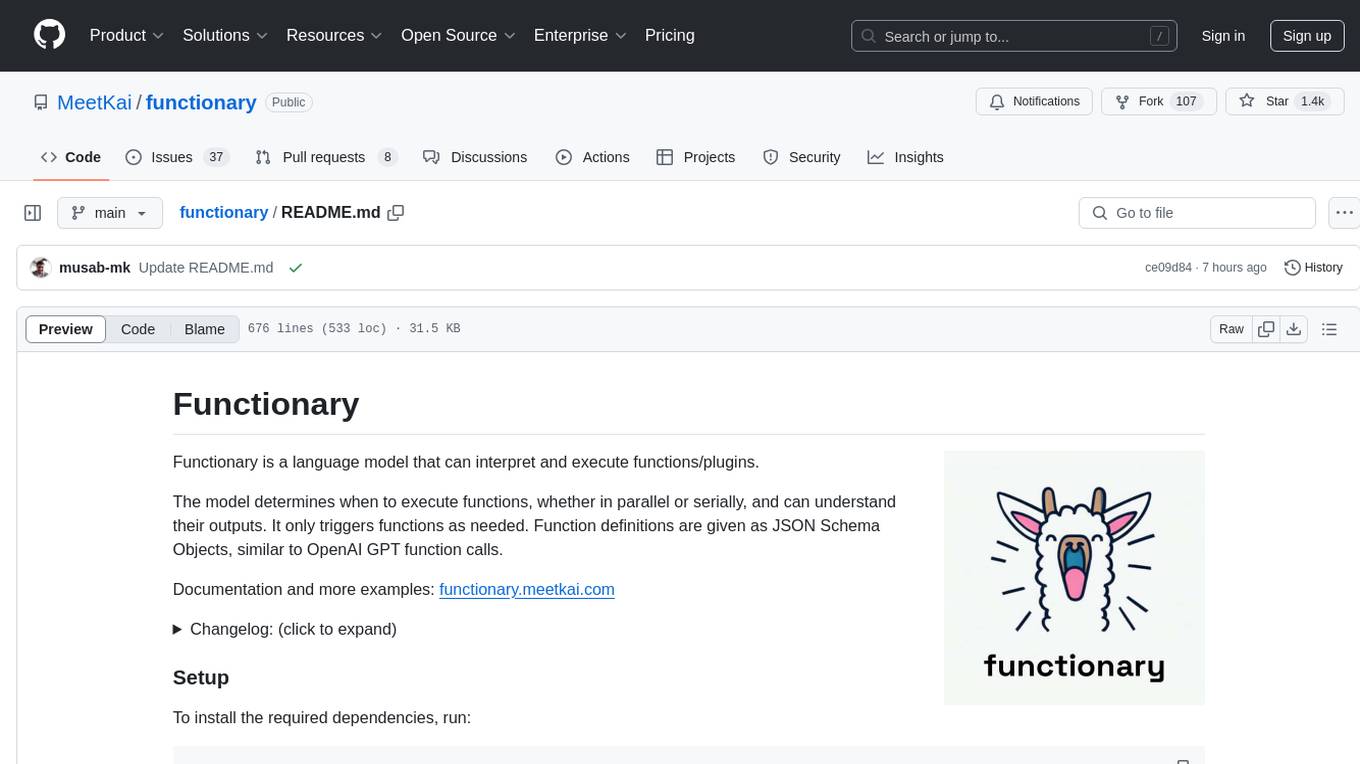
functionary
Functionary is a language model that interprets and executes functions/plugins. It determines when to execute functions, whether in parallel or serially, and understands their outputs. Function definitions are given as JSON Schema Objects, similar to OpenAI GPT function calls. It offers documentation and examples on functionary.meetkai.com. The newest model, meetkai/functionary-medium-v3.1, is ranked 2nd in the Berkeley Function-Calling Leaderboard. Functionary supports models with different context lengths and capabilities for function calling and code interpretation. It also provides grammar sampling for accurate function and parameter names. Users can deploy Functionary models serverlessly using Modal.com.
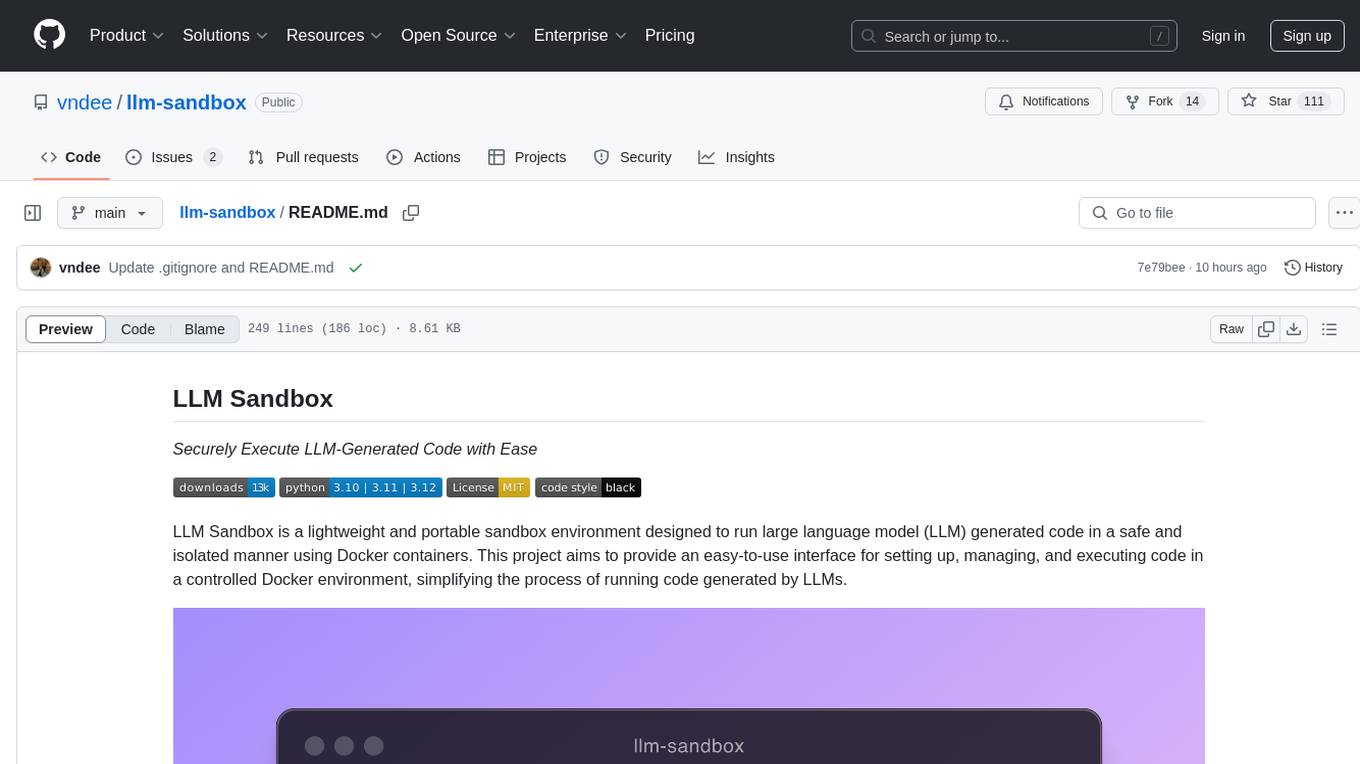
llm-sandbox
LLM Sandbox is a lightweight and portable sandbox environment designed to securely execute large language model (LLM) generated code in a safe and isolated manner using Docker containers. It provides an easy-to-use interface for setting up, managing, and executing code in a controlled Docker environment, simplifying the process of running code generated by LLMs. The tool supports multiple programming languages, offers flexibility with predefined Docker images or custom Dockerfiles, and allows scalability with support for Kubernetes and remote Docker hosts.
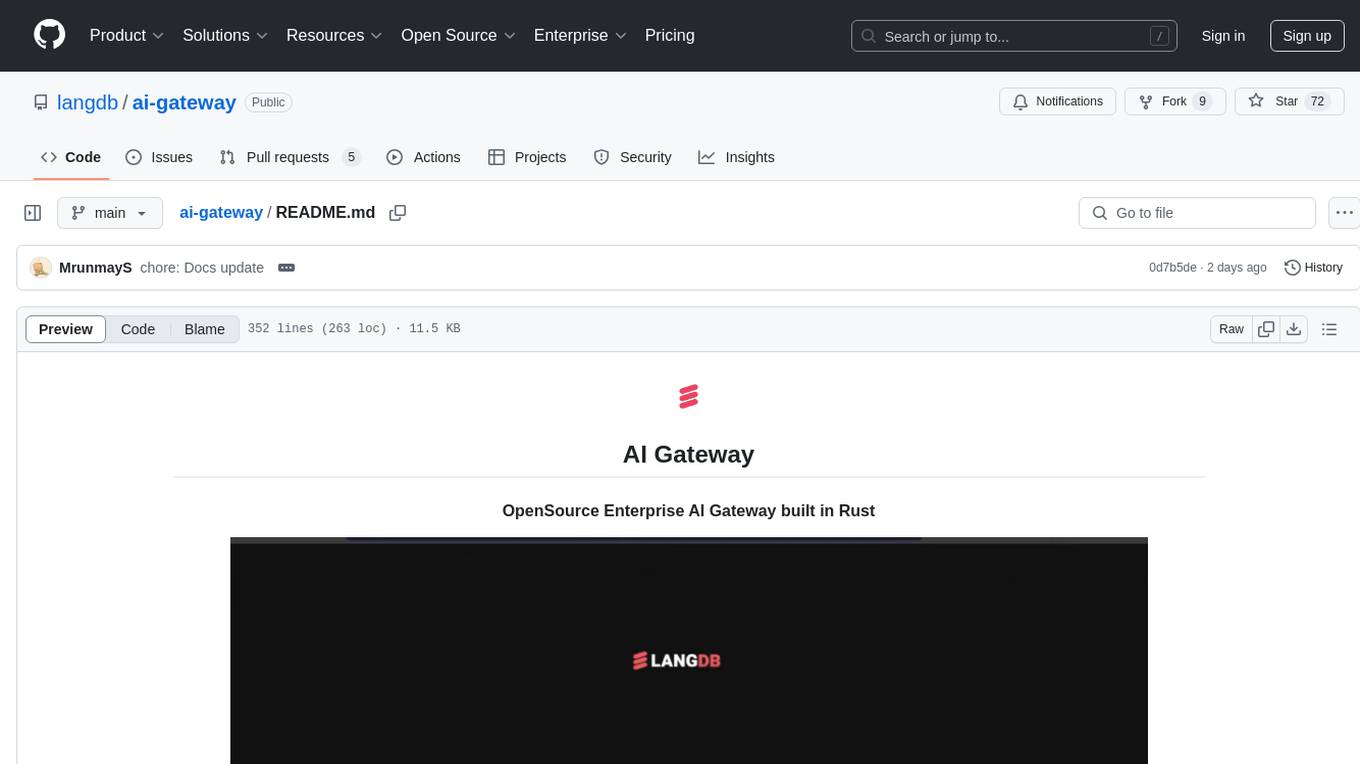
ai-gateway
LangDB AI Gateway is an open-source enterprise AI gateway built in Rust. It provides a unified interface to all LLMs using the OpenAI API format, focusing on high performance, enterprise readiness, and data control. The gateway offers features like comprehensive usage analytics, cost tracking, rate limiting, data ownership, and detailed logging. It supports various LLM providers and provides OpenAI-compatible endpoints for chat completions, model listing, embeddings generation, and image generation. Users can configure advanced settings, such as rate limiting, cost control, dynamic model routing, and observability with OpenTelemetry tracing. The gateway can be run with Docker Compose and integrated with MCP tools for server communication.
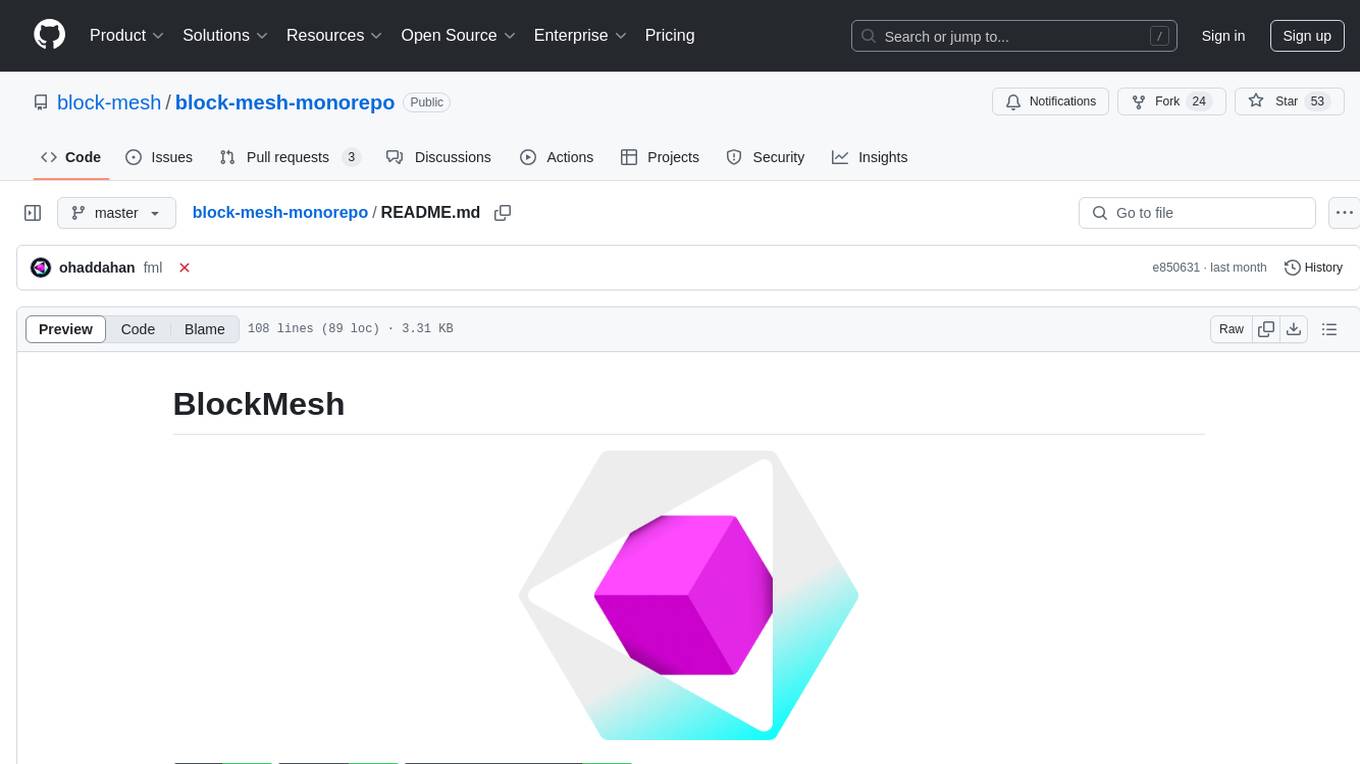
block-mesh-monorepo
BlockMesh is a monorepo containing various tools and scripts for managing a blockchain mesh network. It provides functionalities for setting up environment variables, installing necessary dependencies, running local scripts, and implementing Git hooks for pre-commit and pre-push actions. The repository includes tools for cargo, sqlx-cli, wasm-pack, bunyan, psql, and Docker, along with configurations for different APIs like Twitter and AWS.
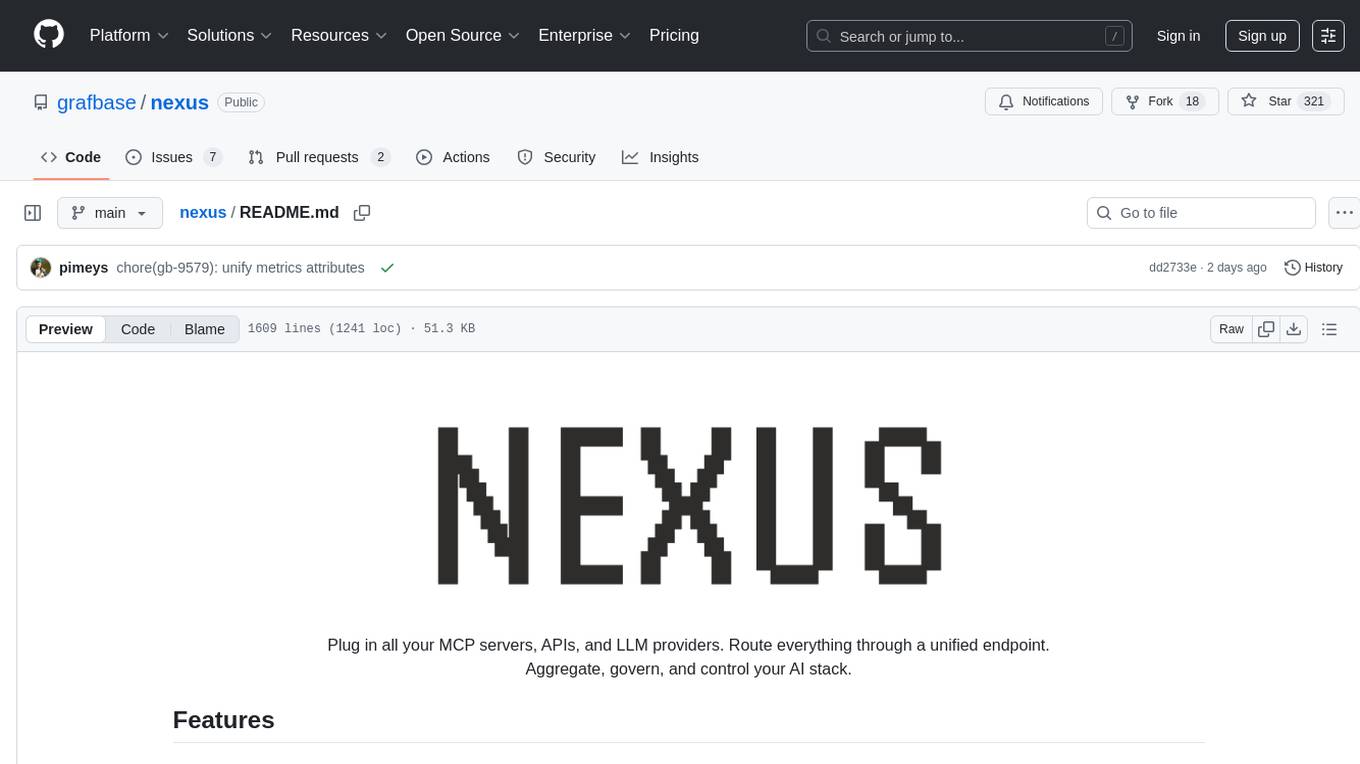
nexus
Nexus is a tool that acts as a unified gateway for multiple LLM providers and MCP servers. It allows users to aggregate, govern, and control their AI stack by connecting multiple servers and providers through a single endpoint. Nexus provides features like MCP Server Aggregation, LLM Provider Routing, Context-Aware Tool Search, Protocol Support, Flexible Configuration, Security features, Rate Limiting, and Docker readiness. It supports tool calling, tool discovery, and error handling for STDIO servers. Nexus also integrates with AI assistants, Cursor, Claude Code, and LangChain for seamless usage.

mcp
Semgrep MCP Server is a beta server under active development for using Semgrep to scan code for security vulnerabilities. It provides a Model Context Protocol (MCP) for various coding tools to get specialized help in tasks. Users can connect to Semgrep AppSec Platform, scan code for vulnerabilities, customize Semgrep rules, analyze and filter scan results, and compare results. The tool is published on PyPI as semgrep-mcp and can be installed using pip, pipx, uv, poetry, or other methods. It supports CLI and Docker environments for running the server. Integration with VS Code is also available for quick installation. The project welcomes contributions and is inspired by core technologies like Semgrep and MCP, as well as related community projects and tools.
aiavatarkit
AIAvatarKit is a tool for building AI-based conversational avatars quickly. It supports various platforms like VRChat and cluster, along with real-world devices. The tool is extensible, allowing unlimited capabilities based on user needs. It requires VOICEVOX API, Google or Azure Speech Services API keys, and Python 3.10. Users can start conversations out of the box and enjoy seamless interactions with the avatars.
For similar tasks
HPT
Hyper-Pretrained Transformers (HPT) is a novel multimodal LLM framework from HyperGAI, trained for vision-language models capable of understanding both textual and visual inputs. The repository contains the open-source implementation of inference code to reproduce the evaluation results of HPT Air on different benchmarks. HPT has achieved competitive results with state-of-the-art models on various multimodal LLM benchmarks. It offers models like HPT 1.5 Air and HPT 1.0 Air, providing efficient solutions for vision-and-language tasks.
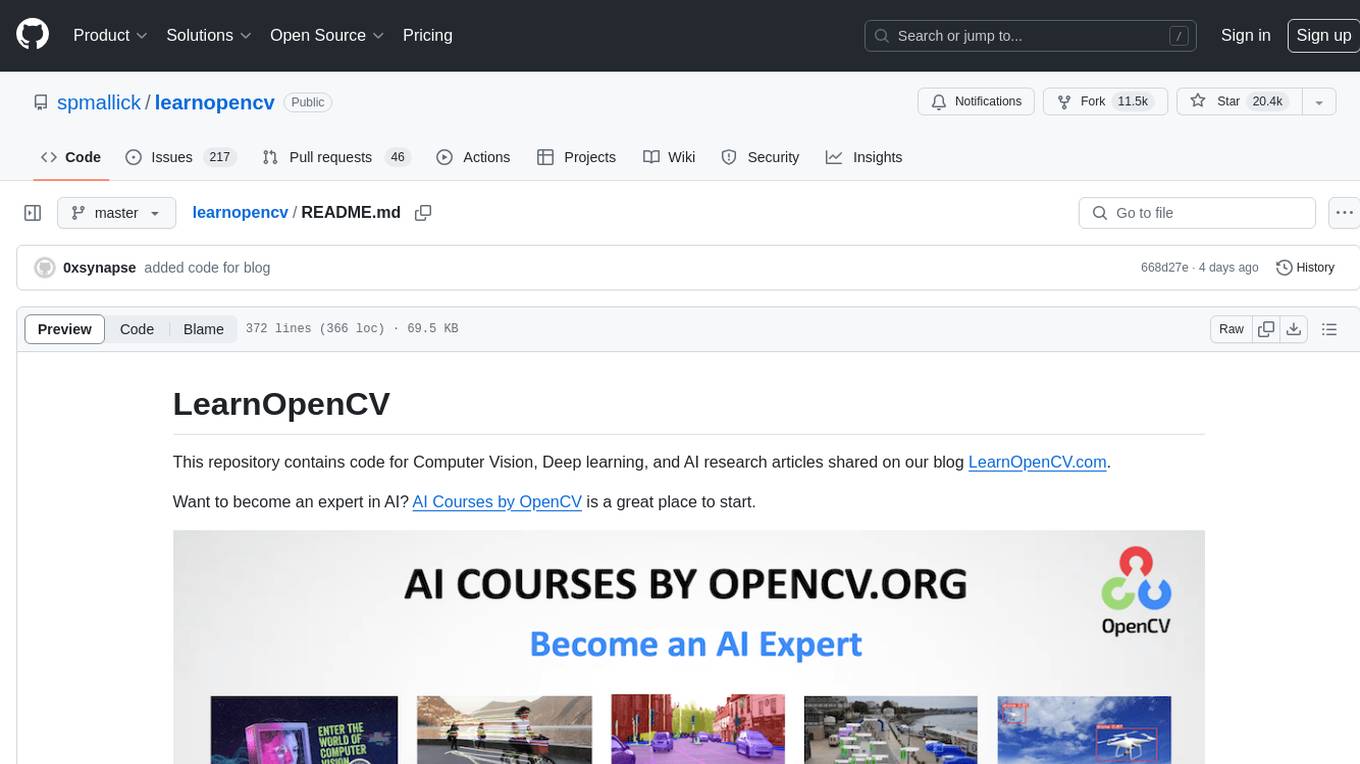
learnopencv
LearnOpenCV is a repository containing code for Computer Vision, Deep learning, and AI research articles shared on the blog LearnOpenCV.com. It serves as a resource for individuals looking to enhance their expertise in AI through various courses offered by OpenCV. The repository includes a wide range of topics such as image inpainting, instance segmentation, robotics, deep learning models, and more, providing practical implementations and code examples for readers to explore and learn from.
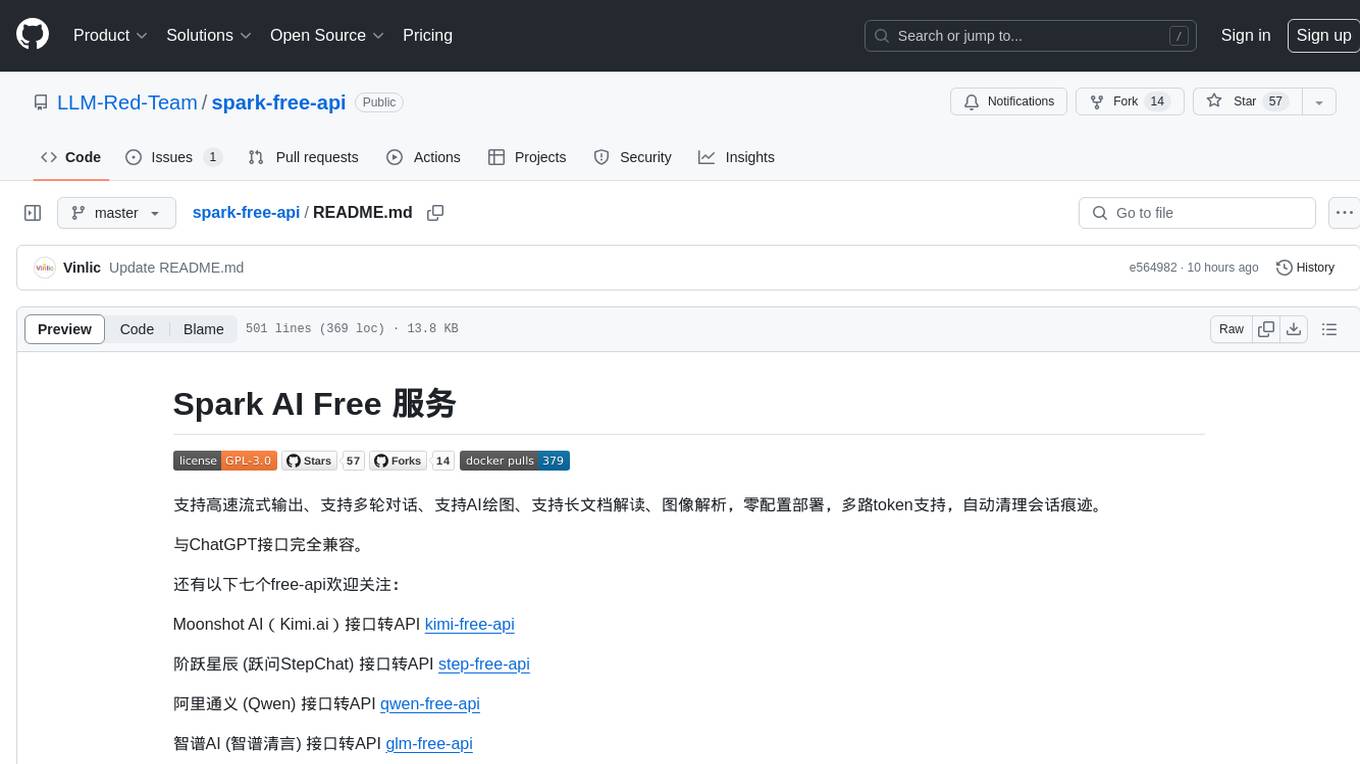
spark-free-api
Spark AI Free 服务 provides high-speed streaming output, multi-turn dialogue support, AI drawing support, long document interpretation, and image parsing. It offers zero-configuration deployment, multi-token support, and automatic session trace cleaning. It is fully compatible with the ChatGPT interface. The repository includes multiple free-api projects for various AI services. Users can access the API for tasks such as chat completions, AI drawing, document interpretation, image analysis, and ssoSessionId live checking. The project also provides guidelines for deployment using Docker, Docker-compose, Render, Vercel, and native deployment methods. It recommends using custom clients for faster and simpler access to the free-api series projects.

mlx-vlm
MLX-VLM is a package designed for running Vision LLMs on Mac systems using MLX. It provides a convenient way to install and utilize the package for processing large language models related to vision tasks. The tool simplifies the process of running LLMs on Mac computers, offering a seamless experience for users interested in leveraging MLX for vision-related projects.
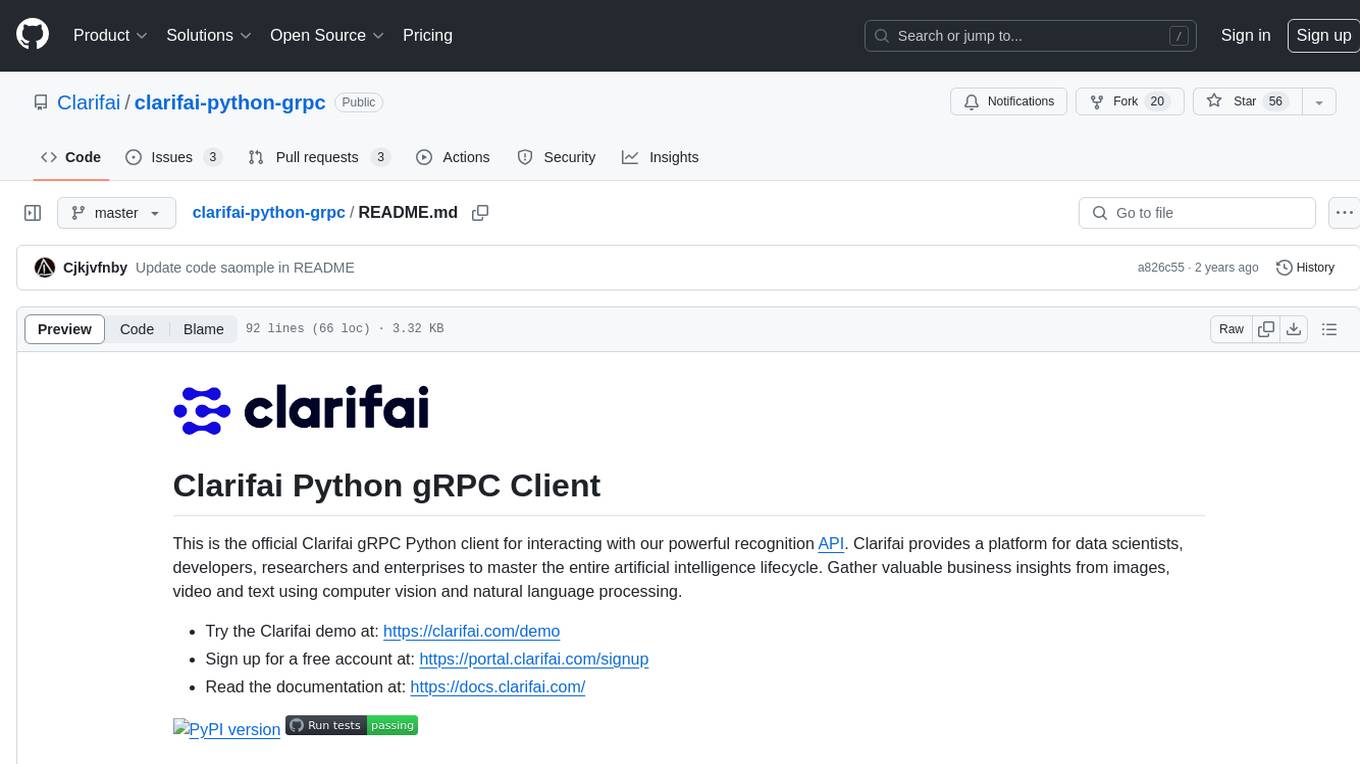
clarifai-python-grpc
This is the official Clarifai gRPC Python client for interacting with their recognition API. Clarifai offers a platform for data scientists, developers, researchers, and enterprises to utilize artificial intelligence for image, video, and text analysis through computer vision and natural language processing. The client allows users to authenticate, predict concepts in images, and access various functionalities provided by the Clarifai API. It follows a versioning scheme that aligns with the backend API updates and includes specific instructions for installation and troubleshooting. Users can explore the Clarifai demo, sign up for an account, and refer to the documentation for detailed information.
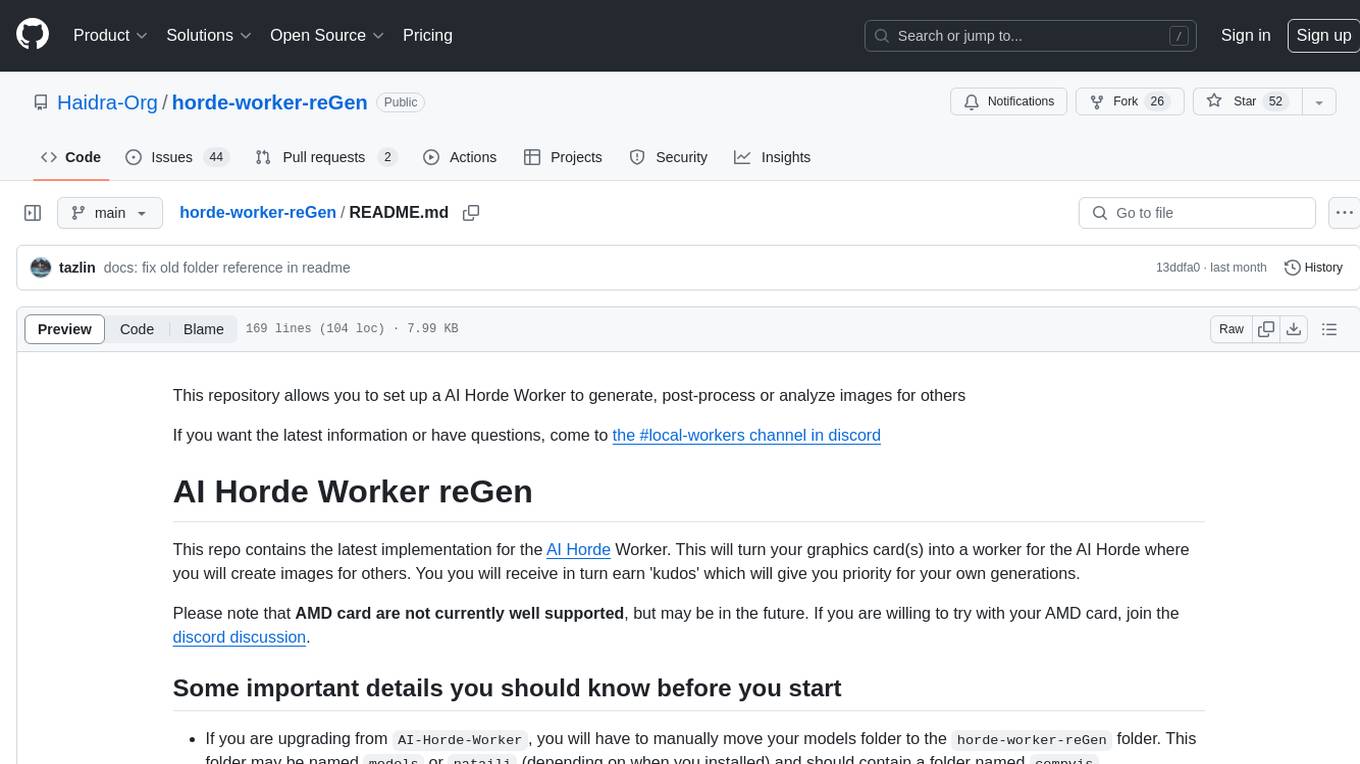
horde-worker-reGen
This repository provides the latest implementation for the AI Horde Worker, allowing users to utilize their graphics card(s) to generate, post-process, or analyze images for others. It offers a platform where users can create images and earn 'kudos' in return, granting priority for their own image generations. The repository includes important details for setup, recommendations for system configurations, instructions for installation on Windows and Linux, basic usage guidelines, and information on updating the AI Horde Worker. Users can also run the worker with multiple GPUs and receive notifications for updates through Discord. Additionally, the repository contains models that are licensed under the CreativeML OpenRAIL License.
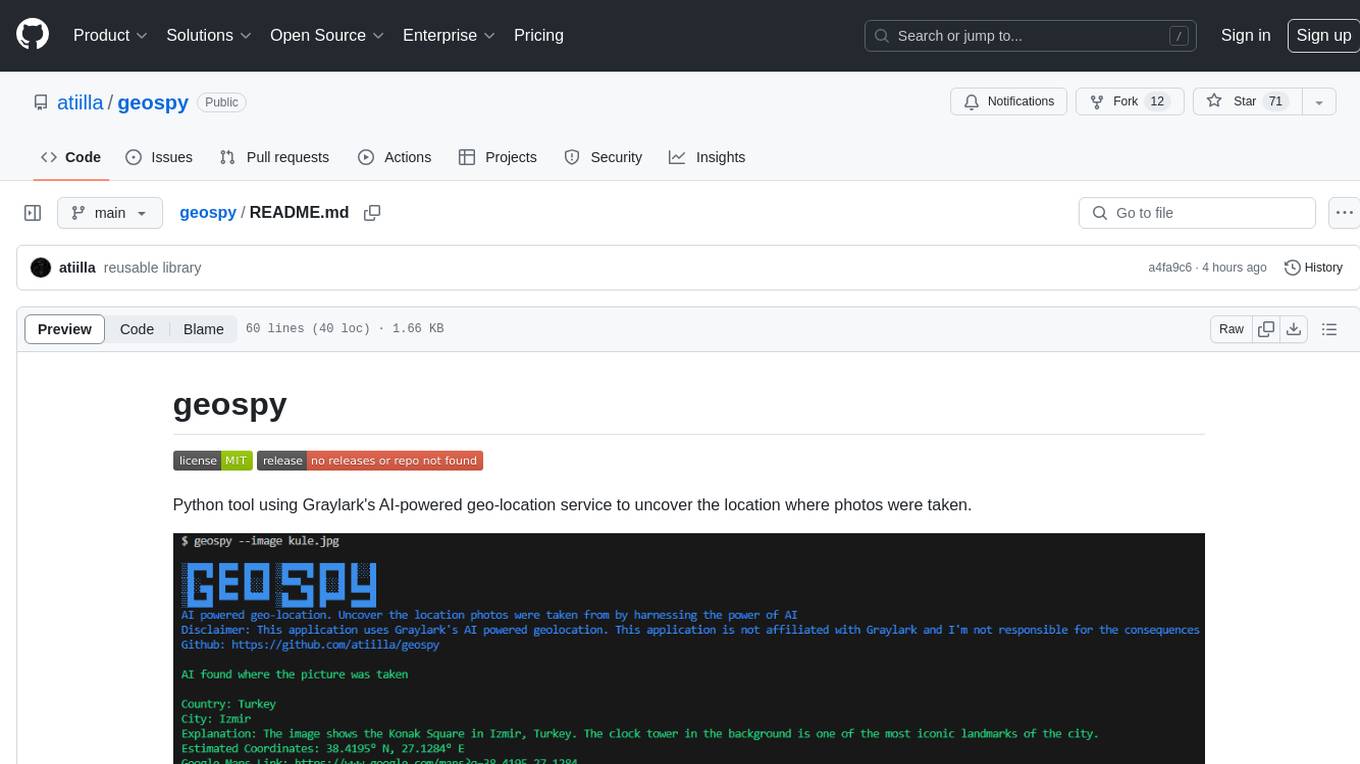
geospy
Geospy is a Python tool that utilizes Graylark's AI-powered geolocation service to determine the location where photos were taken. It allows users to analyze images and retrieve information such as country, city, explanation, coordinates, and Google Maps links. The tool provides a seamless way to integrate geolocation services into various projects and applications.
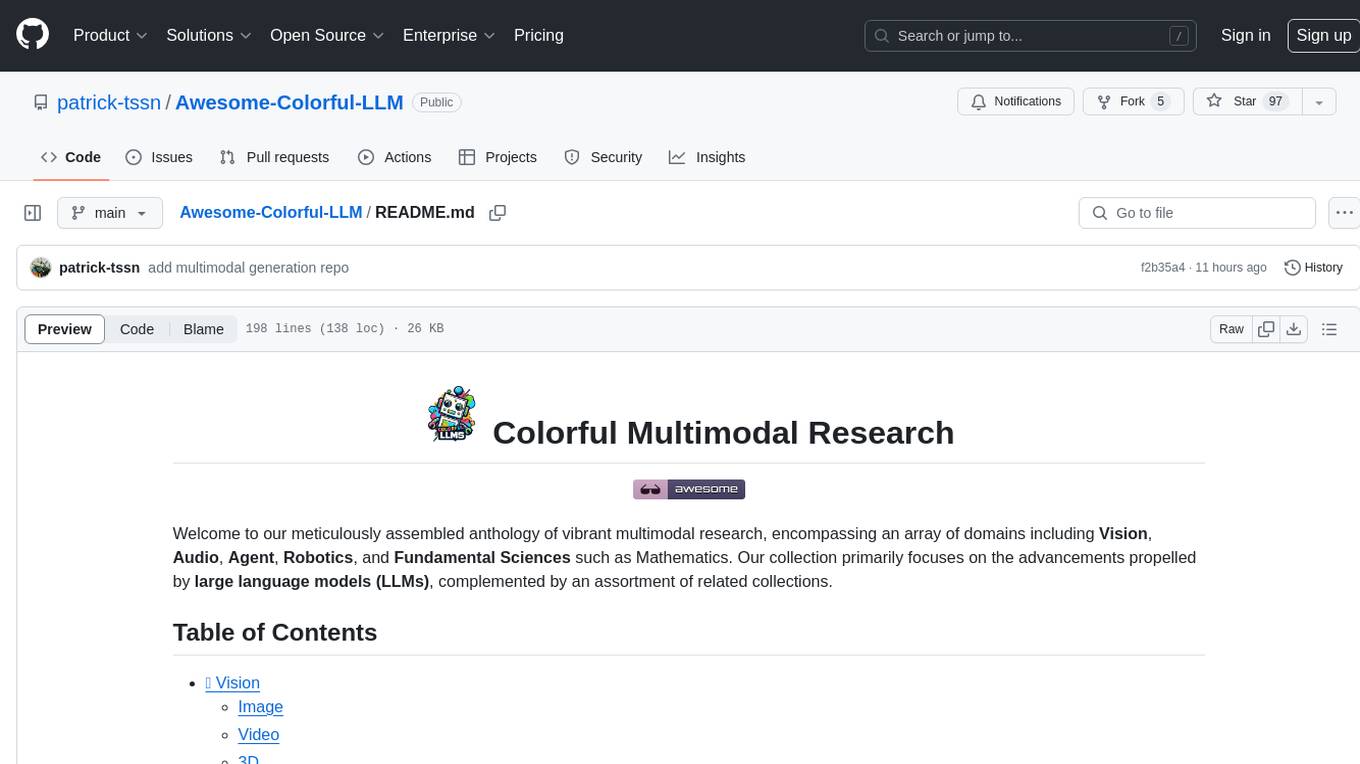
Awesome-Colorful-LLM
Awesome-Colorful-LLM is a meticulously assembled anthology of vibrant multimodal research focusing on advancements propelled by large language models (LLMs) in domains such as Vision, Audio, Agent, Robotics, and Fundamental Sciences like Mathematics. The repository contains curated collections of works, datasets, benchmarks, projects, and tools related to LLMs and multimodal learning. It serves as a comprehensive resource for researchers and practitioners interested in exploring the intersection of language models and various modalities for tasks like image understanding, video pretraining, 3D modeling, document understanding, audio analysis, agent learning, robotic applications, and mathematical research.
For similar jobs
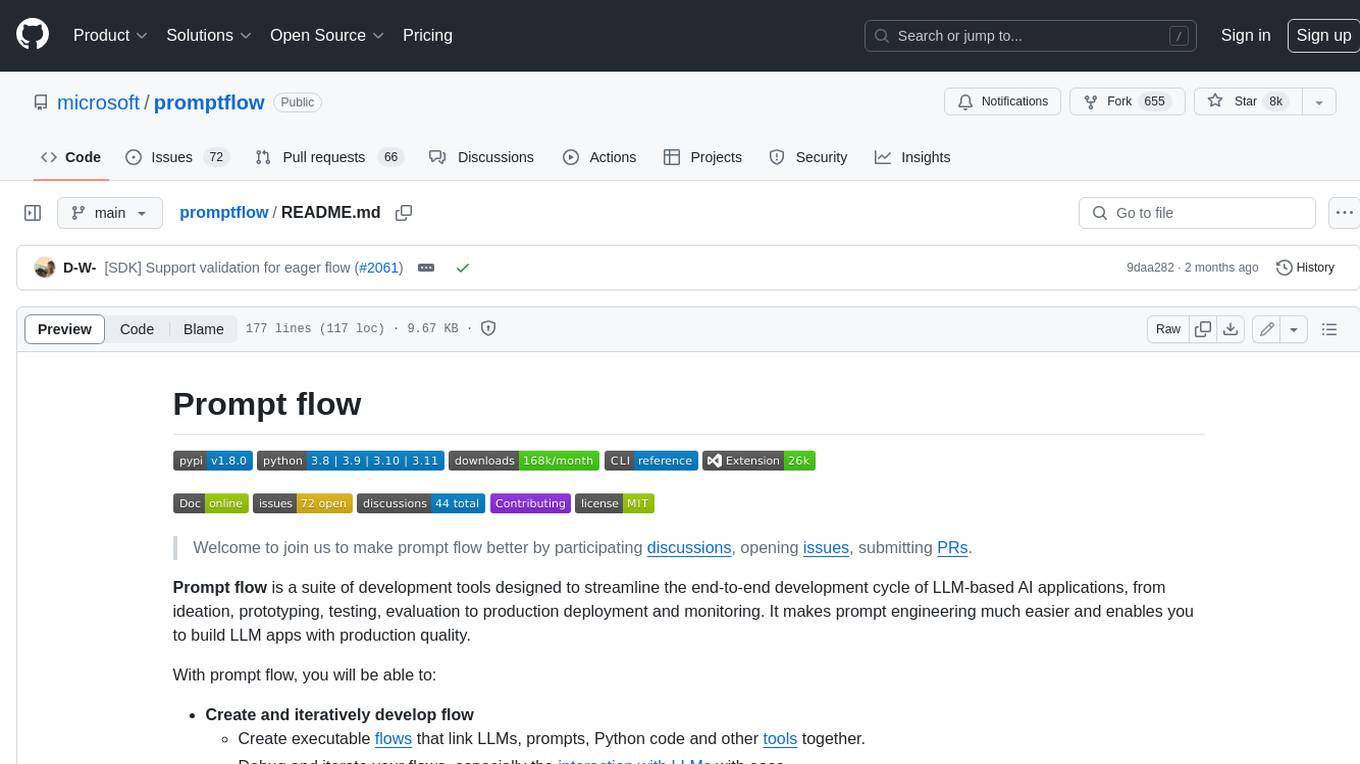
promptflow
**Prompt flow** is a suite of development tools designed to streamline the end-to-end development cycle of LLM-based AI applications, from ideation, prototyping, testing, evaluation to production deployment and monitoring. It makes prompt engineering much easier and enables you to build LLM apps with production quality.
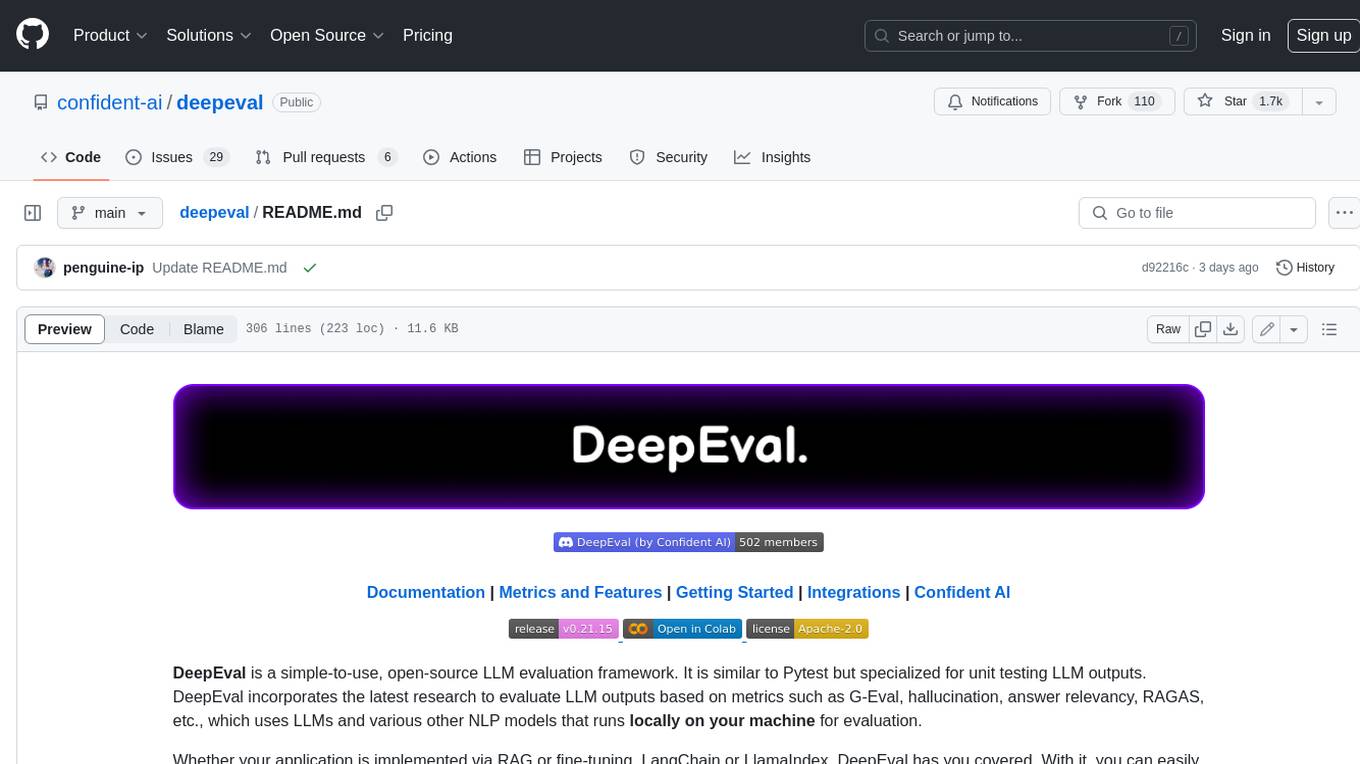
deepeval
DeepEval is a simple-to-use, open-source LLM evaluation framework specialized for unit testing LLM outputs. It incorporates various metrics such as G-Eval, hallucination, answer relevancy, RAGAS, etc., and runs locally on your machine for evaluation. It provides a wide range of ready-to-use evaluation metrics, allows for creating custom metrics, integrates with any CI/CD environment, and enables benchmarking LLMs on popular benchmarks. DeepEval is designed for evaluating RAG and fine-tuning applications, helping users optimize hyperparameters, prevent prompt drifting, and transition from OpenAI to hosting their own Llama2 with confidence.
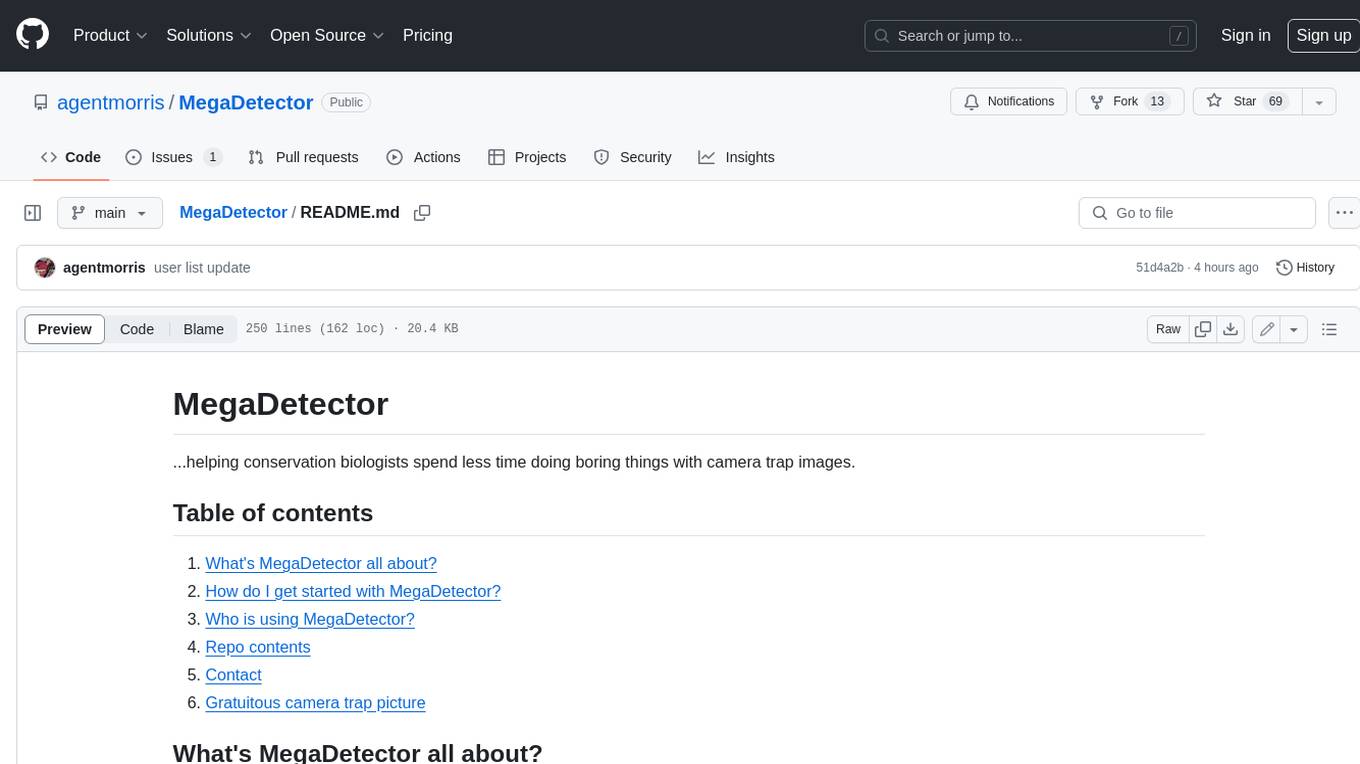
MegaDetector
MegaDetector is an AI model that identifies animals, people, and vehicles in camera trap images (which also makes it useful for eliminating blank images). This model is trained on several million images from a variety of ecosystems. MegaDetector is just one of many tools that aims to make conservation biologists more efficient with AI. If you want to learn about other ways to use AI to accelerate camera trap workflows, check out our of the field, affectionately titled "Everything I know about machine learning and camera traps".

leapfrogai
LeapfrogAI is a self-hosted AI platform designed to be deployed in air-gapped resource-constrained environments. It brings sophisticated AI solutions to these environments by hosting all the necessary components of an AI stack, including vector databases, model backends, API, and UI. LeapfrogAI's API closely matches that of OpenAI, allowing tools built for OpenAI/ChatGPT to function seamlessly with a LeapfrogAI backend. It provides several backends for various use cases, including llama-cpp-python, whisper, text-embeddings, and vllm. LeapfrogAI leverages Chainguard's apko to harden base python images, ensuring the latest supported Python versions are used by the other components of the stack. The LeapfrogAI SDK provides a standard set of protobuffs and python utilities for implementing backends and gRPC. LeapfrogAI offers UI options for common use-cases like chat, summarization, and transcription. It can be deployed and run locally via UDS and Kubernetes, built out using Zarf packages. LeapfrogAI is supported by a community of users and contributors, including Defense Unicorns, Beast Code, Chainguard, Exovera, Hypergiant, Pulze, SOSi, United States Navy, United States Air Force, and United States Space Force.
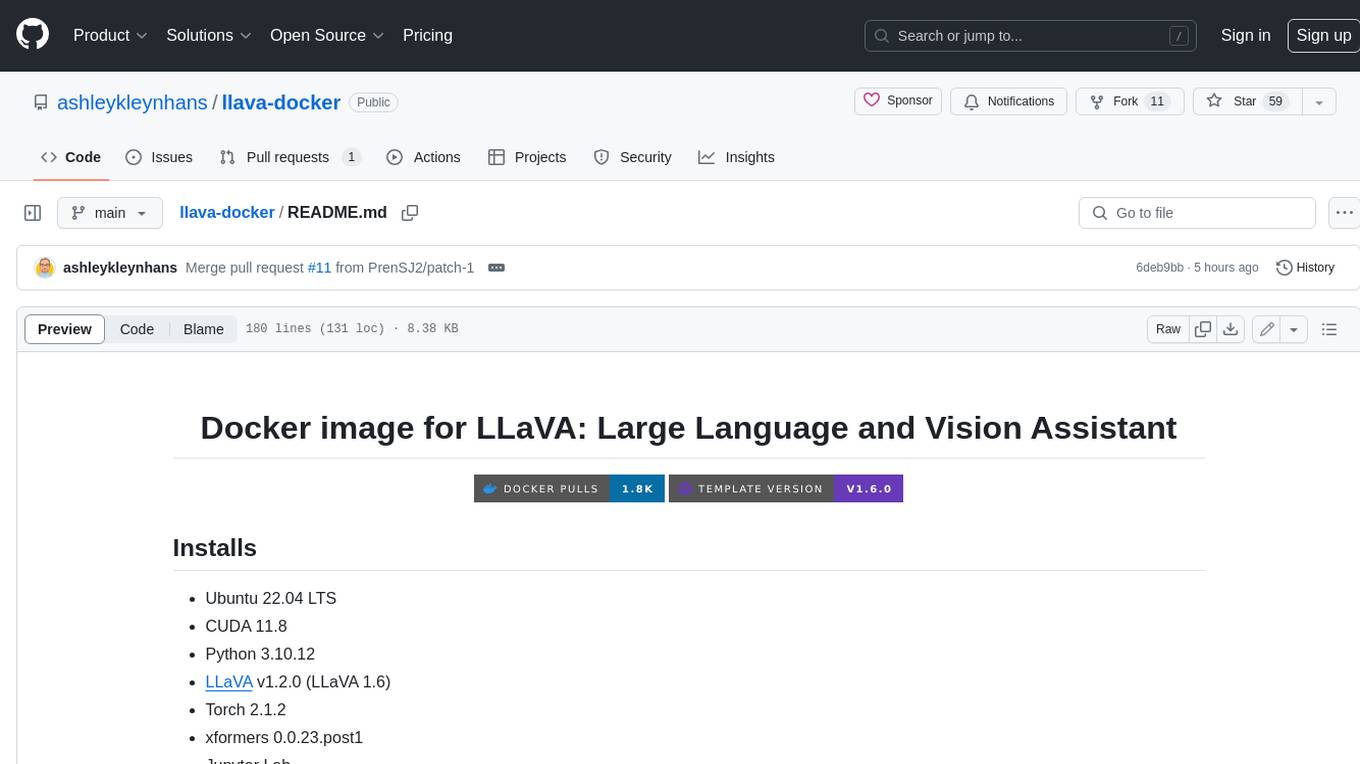
llava-docker
This Docker image for LLaVA (Large Language and Vision Assistant) provides a convenient way to run LLaVA locally or on RunPod. LLaVA is a powerful AI tool that combines natural language processing and computer vision capabilities. With this Docker image, you can easily access LLaVA's functionalities for various tasks, including image captioning, visual question answering, text summarization, and more. The image comes pre-installed with LLaVA v1.2.0, Torch 2.1.2, xformers 0.0.23.post1, and other necessary dependencies. You can customize the model used by setting the MODEL environment variable. The image also includes a Jupyter Lab environment for interactive development and exploration. Overall, this Docker image offers a comprehensive and user-friendly platform for leveraging LLaVA's capabilities.
carrot
The 'carrot' repository on GitHub provides a list of free and user-friendly ChatGPT mirror sites for easy access. The repository includes sponsored sites offering various GPT models and services. Users can find and share sites, report errors, and access stable and recommended sites for ChatGPT usage. The repository also includes a detailed list of ChatGPT sites, their features, and accessibility options, making it a valuable resource for ChatGPT users seeking free and unlimited GPT services.
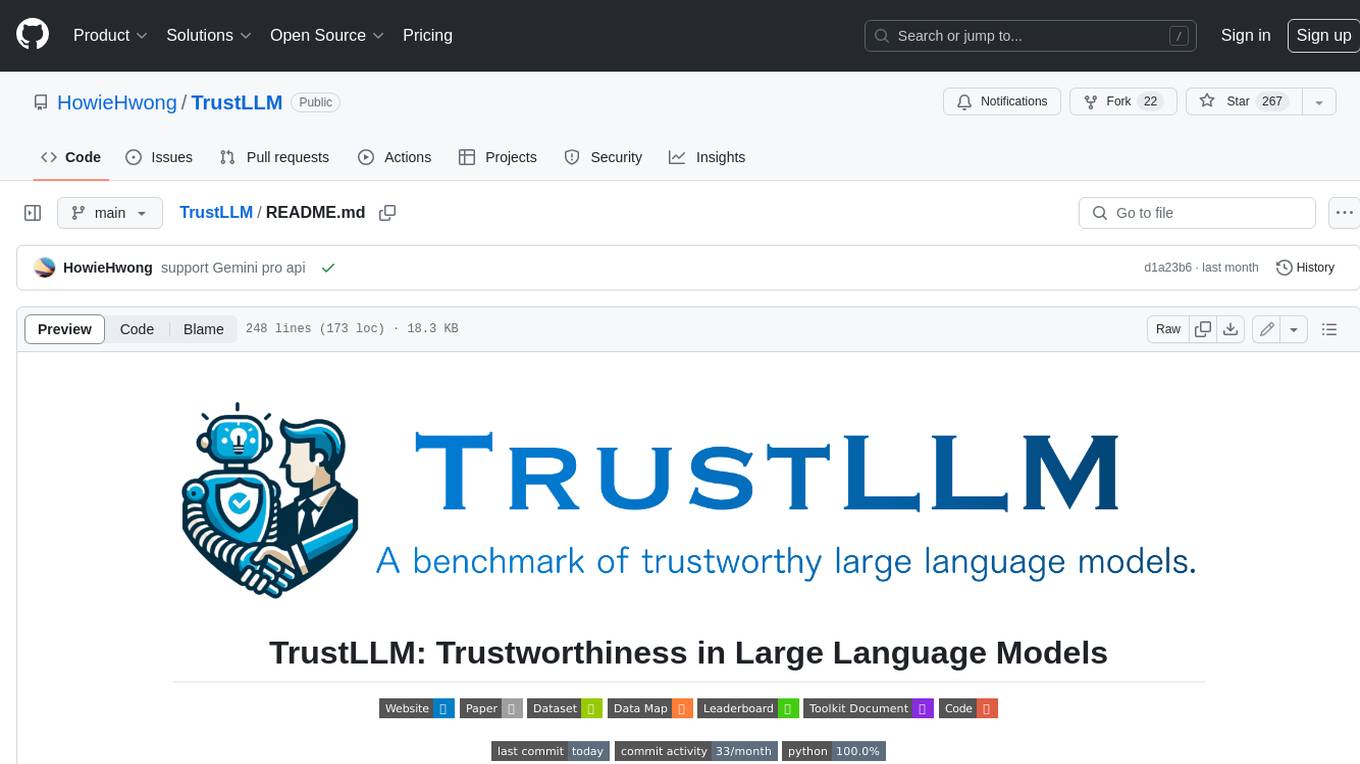
TrustLLM
TrustLLM is a comprehensive study of trustworthiness in LLMs, including principles for different dimensions of trustworthiness, established benchmark, evaluation, and analysis of trustworthiness for mainstream LLMs, and discussion of open challenges and future directions. Specifically, we first propose a set of principles for trustworthy LLMs that span eight different dimensions. Based on these principles, we further establish a benchmark across six dimensions including truthfulness, safety, fairness, robustness, privacy, and machine ethics. We then present a study evaluating 16 mainstream LLMs in TrustLLM, consisting of over 30 datasets. The document explains how to use the trustllm python package to help you assess the performance of your LLM in trustworthiness more quickly. For more details about TrustLLM, please refer to project website.

AI-YinMei
AI-YinMei is an AI virtual anchor Vtuber development tool (N card version). It supports fastgpt knowledge base chat dialogue, a complete set of solutions for LLM large language models: [fastgpt] + [one-api] + [Xinference], supports docking bilibili live broadcast barrage reply and entering live broadcast welcome speech, supports Microsoft edge-tts speech synthesis, supports Bert-VITS2 speech synthesis, supports GPT-SoVITS speech synthesis, supports expression control Vtuber Studio, supports painting stable-diffusion-webui output OBS live broadcast room, supports painting picture pornography public-NSFW-y-distinguish, supports search and image search service duckduckgo (requires magic Internet access), supports image search service Baidu image search (no magic Internet access), supports AI reply chat box [html plug-in], supports AI singing Auto-Convert-Music, supports playlist [html plug-in], supports dancing function, supports expression video playback, supports head touching action, supports gift smashing action, supports singing automatic start dancing function, chat and singing automatic cycle swing action, supports multi scene switching, background music switching, day and night automatic switching scene, supports open singing and painting, let AI automatically judge the content.
